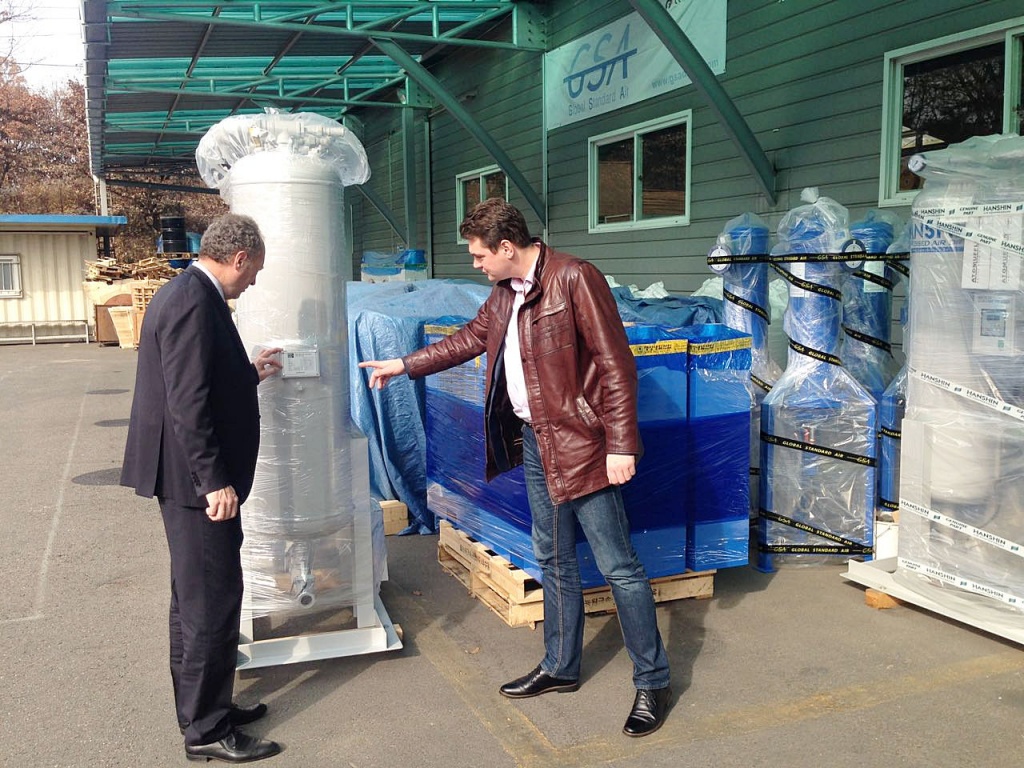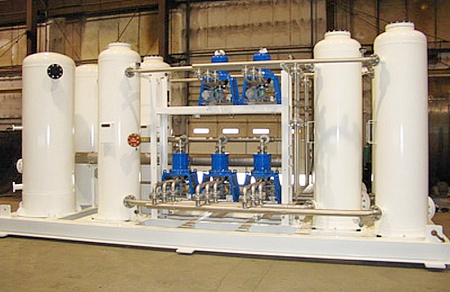HOGAT LLC delivers, installs and starts up the Adsorption Air Separation Plants GSA.
The technology of air-gas separation by adsorption is used where less gas production from the air and less energy are required. Operating principle of aration of Adsorption Air Separation Plants is based on ability to absorb material (through which air passes) molecules of one of the gases: N2, O2, H2, Ar, CO2, … The air in such Plant is initially compressed by the Compressor, passes through the Adsorbent and leaves the Plant without absorbed gas. The most commonly used absorption of nitrogen and oxygen, as the most sought-after technical gases. Adsorption Air Separation Plants are abbreviated as Short-Cycle Heatless Adsorption (SCHA) or Pressure Swing Adsorption (PSA).
PSA Plants are demanded in the most various industries, where service gases of different purity are required:
- Glass Industry;
- Autogenous Oxygen Production;
- Microbiological Production;
- Pulp and Paper Industry;
- Metallurgy;
- Underground Coal Gasification (Repressuring);
- Solid Waste Incineration;
- Fishery;
- Sewage Treatment (Aeration);
- Food and Pharmaceutical Industry.



PSA Plants have the following advantages:
- Fire and explosion safety and simplicity of design;
- Flexible ragulating of gas concentration released from the air by changing the performance rates;
- Minimum ramp-up time;
- Conviniant operability and maintainability;
- High degree of Unit automation.
Adsorption Air Separation Plants are competitive wherein greater energy efficiency is required (compared to Cryogenic Plants), they are relatively cheap, it is possible to change the gas concentration. PSA Plants are also widely used where it is necessary to refine (increase the gas concentration and purify the gas from gaseous impurities).
Adsorption Air Separation Plants GSA are excellent solution for production of service gases, where they require relatively high purity (95 - 99.9995%) in the gaseous state.

